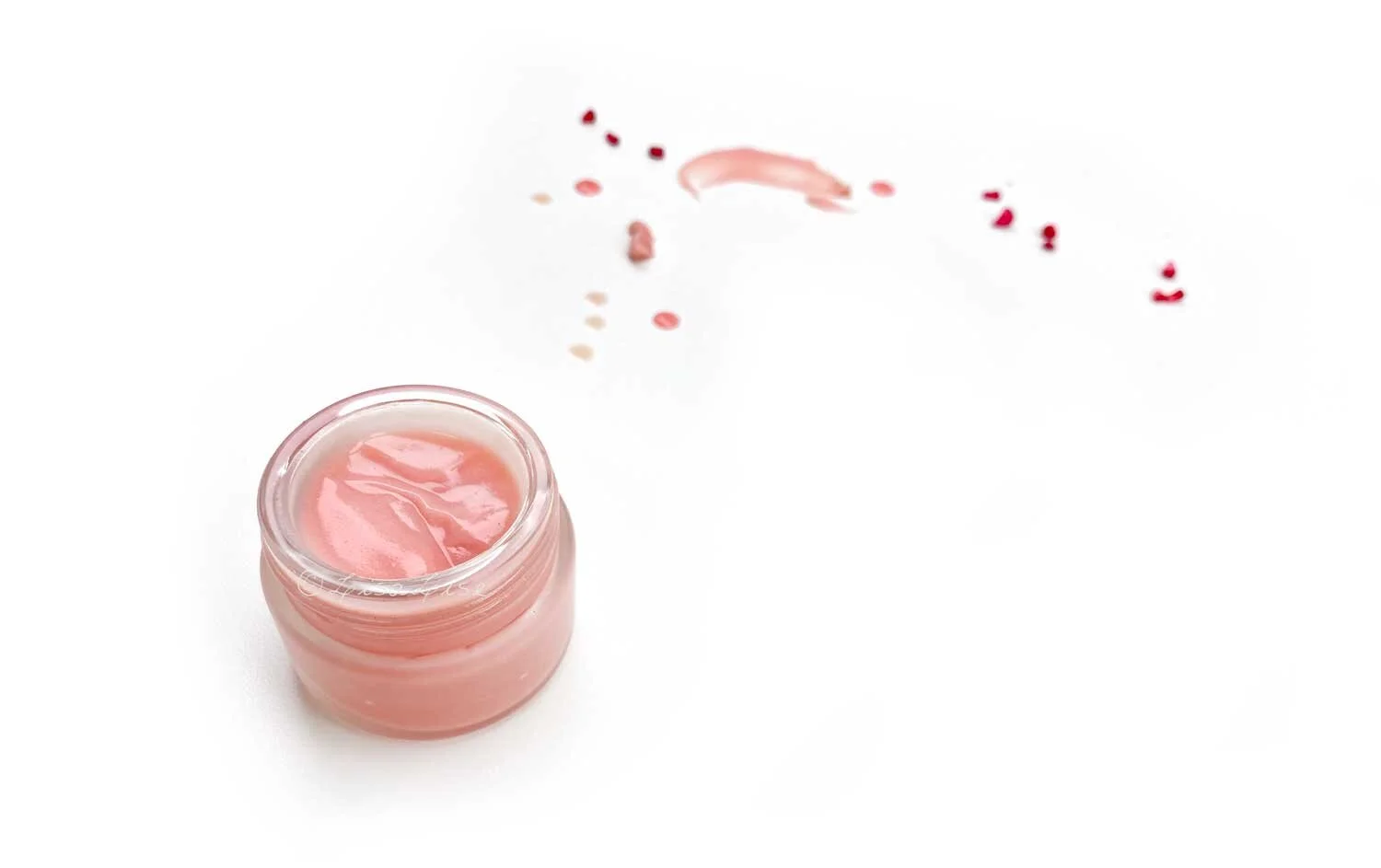How to Make Fresh Raspberry Face Cream
Lise
Loads of people who have caught the glycerite-making bug have asked me ‘What can I use my glycerites in? Formulas rarely call for very much glycerine/glycerite.’
So I decided to see if it was possible to create a lovely face cream with a whopping amount of hand-crafted glycerite that didn’t feel tacky or draggy.
And wouldn’t you know, I succeeded.
This raspberry cream is absolutely divine (if I do say so myself), is fabulously pink, has a massive 30% glycerite (yes, THAT much), and I have been so pleased with the result, I just had to share it with you.
Fair warning on the color: it looks really fabulously pink right after you make it, but will fade slowly but surely as time passes. I took pictures of it after 3 months that you can check below. It morphed into quite a pleasant baby-pink color. Mind you, it has been packaged in a frosted clear jar and stored in my bathroom where it has been exposed to quite a bit of daylight. I’m guessing if you package this in a UV safe jar, it will keep the color a lot longer.
This batch makes 100 g (about 3.5 oz).
LisaLise’s Raspberry Cream Delight Formula
| Phase | Ingredient | Grams |
|---|---|---|
| A | Freshly Boiled Demineralized Water | 40.0 |
| A | Aloe Vera Juice | 10.0 |
| A | Raspberry Glycerite | 30.0 |
| B | St. John's Wort Infused Olive Oil | 8.0 |
| B | Olivem 1000 Emulsifying Wax | 6.0 |
| B | Cetyl Alcohol | 2.0 |
| C | Extracts of Choice | 3.0 |
| C | Broad Spectrum Preservative | 1.0 |
Here are phases A and B ready to be heated.
METHOD
Heat phases A and B in separate containers over a hot water bath until fully melted (about 70 C)
As soon as phase B has fully melted, remove both phases from the heat.
Pour phase B into phase A in a slow steady stream while stirring continuously. Take care not to introduce air into the mixture. Your stirring tool (I use a whisk) should be in constant contact with the bottom of the container. TIP: the emulsions book lined below gives you a blow by blow the hand-stirring technique I have used for yonks (that means a long time).
Continue stirring at a comfortable speed. The mixture will emulsify and thicken as it cools.
At 40 C, add phase C ingredients and stir to incorporate fully.
Check pH and adjust if necessary. (You may also want to check pH before adding phase C ingredients if you are using any extracts/preservative with specific pH requirements)
Transfer to jars
Pat yourself on the back for making all-natural fabulousness.
Extracts
The pictured batch has 1.5% raspberry extract, 0.5% Algica (in gel form), and 1% additional raspberry glycerite.
Preservative
For this batch, I used 1.0% Spectrastat (from Inolex). If the preservative you use calls for a different dosage, adjust the amount of water accordingly.
Glycerite
I used a self-preserving fresh raspberry glycerite in the pictured batch, but you could also make a strawberry (or other fruit) glycerite and change the whole scent profile. You can even replace the glycerite with glycerine, but obviously, your cream won’t have the fragrance or popping color from the glycerite. There’s a link below to my glycerites book if you want to see more.
Oil
Use any red oil you like (consider buruti, unrefined palm oil, etc). If you use a different fruit glycerite, choose an oil with a color that will complement your glycerite.
Here is the cream after 3 months. The color has faded some, but then, it is packaged in a clear container and has been exposed to daylight since making, so this isn’t too bad as color fading goes.
If you don’t already make your own glycerites and want to get busy, the book below will show you how.
The cream in this post is stirred by hand. The book below shows you my hand-stirring technique (and also has a selection of formulas you may want to make too.





